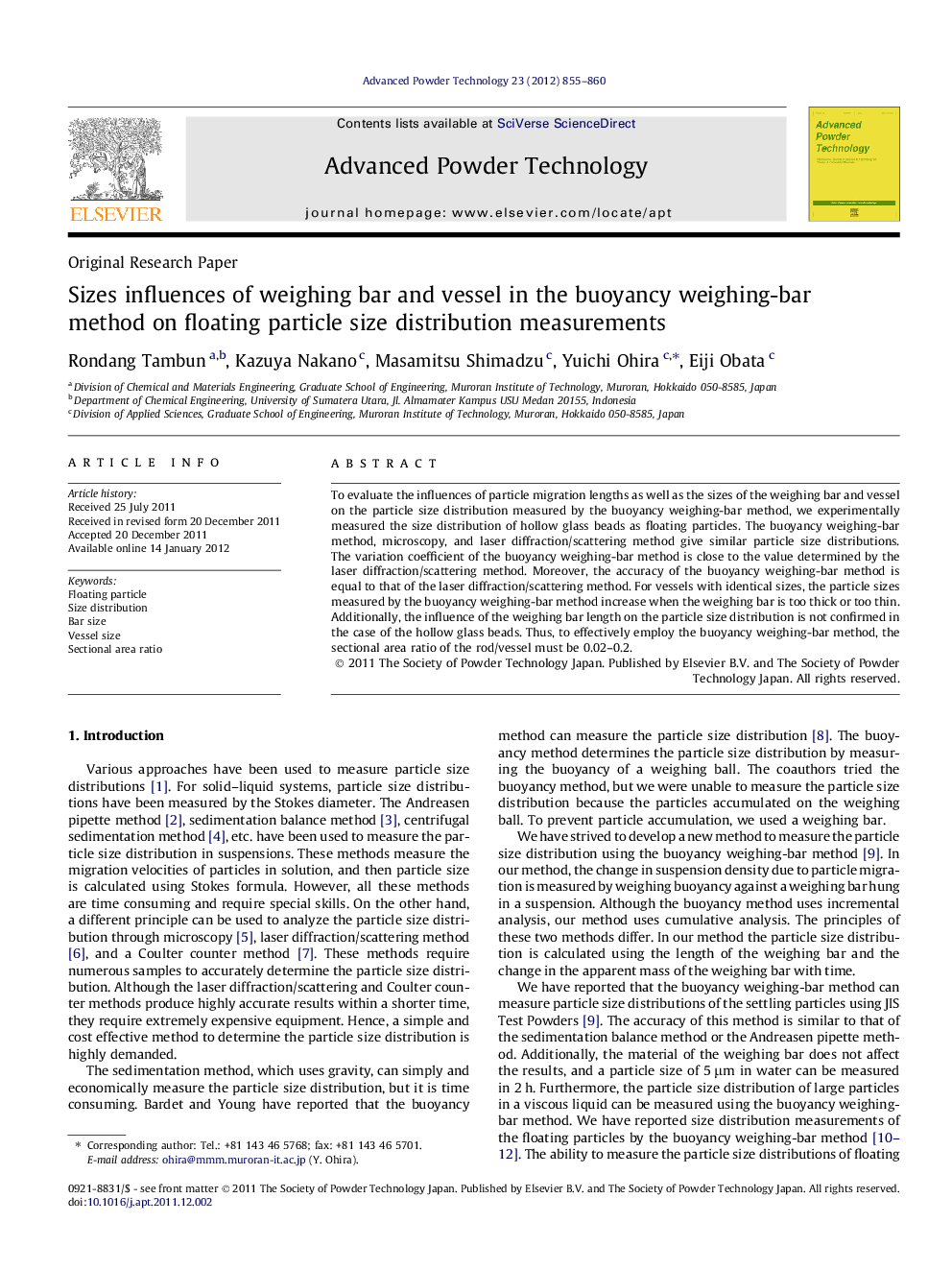| Article ID | Journal | Published Year | Pages | File Type |
|---|---|---|---|---|
| 144316 | Advanced Powder Technology | 2012 | 6 Pages |
To evaluate the influences of particle migration lengths as well as the sizes of the weighing bar and vessel on the particle size distribution measured by the buoyancy weighing-bar method, we experimentally measured the size distribution of hollow glass beads as floating particles. The buoyancy weighing-bar method, microscopy, and laser diffraction/scattering method give similar particle size distributions. The variation coefficient of the buoyancy weighing-bar method is close to the value determined by the laser diffraction/scattering method. Moreover, the accuracy of the buoyancy weighing-bar method is equal to that of the laser diffraction/scattering method. For vessels with identical sizes, the particle sizes measured by the buoyancy weighing-bar method increase when the weighing bar is too thick or too thin. Additionally, the influence of the weighing bar length on the particle size distribution is not confirmed in the case of the hollow glass beads. Thus, to effectively employ the buoyancy weighing-bar method, the sectional area ratio of the rod/vessel must be 0.02–0.2.
Graphical abstractFigure optionsDownload full-size imageDownload as PowerPoint slideHighlights► We measured the floating particle sizes by the buoyancy weighing-bar method. ► We investigated sizes influences of weighing bar and vessel on the size distribution. ► The suitable range of the sectional area ratio of weighing bar/vessel was 0.02–0.2.
